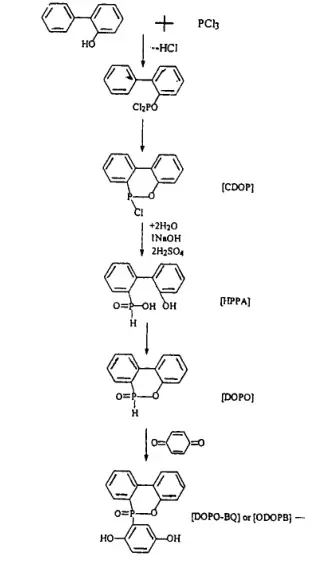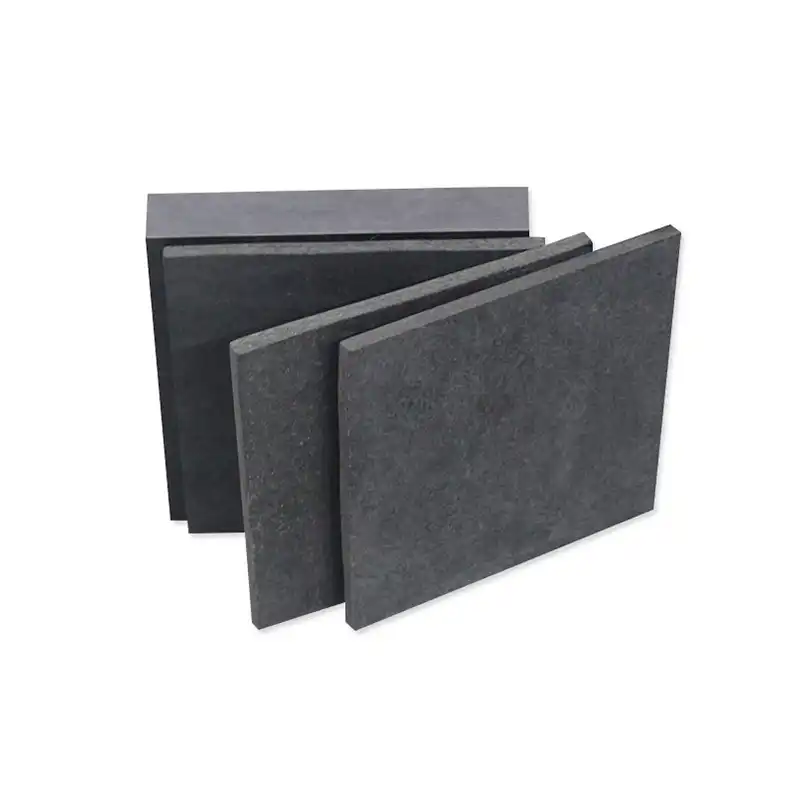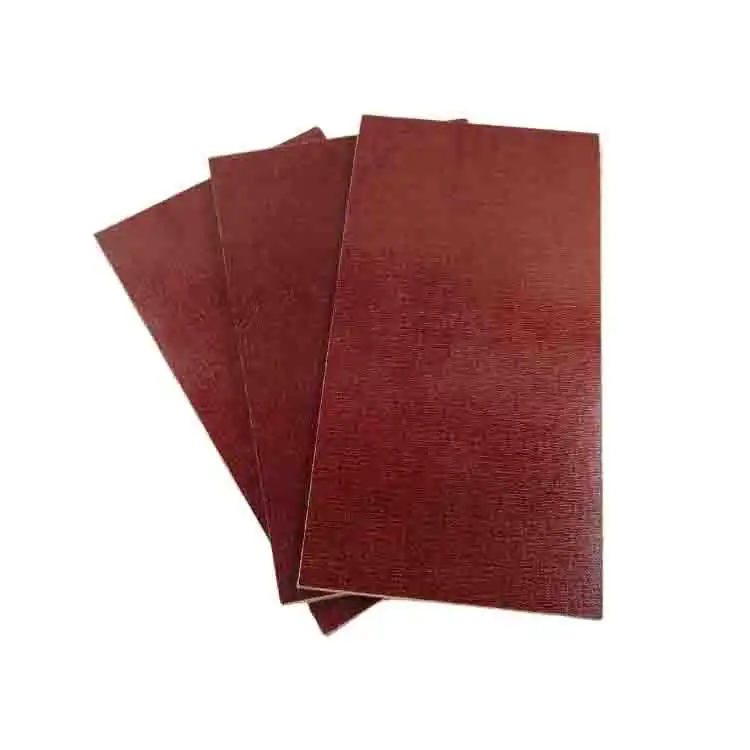Guide to Development a non-halogen flame retardant FR4 sheet copper clad laminate
2022-08-31
Under the situation of global environmental protection strict requirements, the halogen -free PCB substrate materials have been raised and developed rapidly in the mid -1990s. The development of halogen-free FR4 sheet copper-covered plate manufacturing technology has become an important issue for the copper cover industry today and even the future. This article takes Japan's development process as an example to discuss the development direction of halogen-free FR-4 copper-covered plates. The key to the development of halogen-free FR-4 copper-covered plates is haloglyized resin
1. Development ideas
The key to the development of halogen-free FR-4 copper-covered plates is haloglyized resin
Development of manufacturing technology
a) Three levels
Handalized FR-4 copper covering plate is developed in Japan from the technical level in Japan
It can be divided into three levels as shown in Table 1.
i. Japan's CCL manufacturers developed from the mid-1990s to 1998 "horizontal i" halogen-free FR4 sheet products. This type of CCL can meet the requirements of general standard performance. It has not only made a certain application in Japan's domestic PCB manufacturers in Japan, but also measures and experimentally applied in many large -scale electronic machine products manufacturers in Europe. For example: at the "International Hammered Materials" conference held in Sweden in September 1999 and a large international conference on "Electronics Green" held in Berlin, Germany in September 2000, they were all in Japan. The performance of the halogen-free FR-4 copper-covered plate has made positive evaluation and recognition, but it also pointed out that the lack of dampness is that "the moisture resistance is still a problem that this material will continue to be studied in the future." At this stage, the mastery of phosphate compounds and epoxy resin synthesis technology is not very deep into some manufacturers to simply use the addition method to achieve flame retardability so that certain properties such as low moisture resistance.
Three levels of halogen-free FR-4 copper-covered plate technology development | |||
Level 1 | Level 2 | Level 3 | |
Resin Composition | Composition system of halogen -free epoxy resin using phosphorus -based flame retardants | Composition system of halogen -free epoxy resin using phosphorus -based flame retardants | The combustible and phosphorus -free flame retardant epoxy system is adopted |
Special Goal | Reach general features (including flame retardant levels to UL94 V0) | The overall equilibrium requirements of characteristics (high TG, high processability, low cost, etc.) | The overall equilibrium requirements of the characteristics meet the high environmental requirements |
i. The cutting-edge technologies of Japan's halogen-free FR-4 are now developed to the "horizontal II" stage shown in Table 1. Some CCL manufacturers improve the overall performance equilibrium of such boards, especially in the application performance, including processability. At present, many manufacturers in Japan and other countries in the world have mastered halogen-free FR-4 copper-covered plate manufacturing technology, but they have a certain difference in application performance, especially processing performance.
ii. Many overseas CCLs and PCB experts predict that the "horizontal III" products that are not halogen and phosphorus -free in the future are the direction of research and development. This is mainly based on the dampness and heat resistance requirements of the panel, and the phosphorus-based combination of 30 wishes Datong: Handalized FR-4 copper-covered plate development Progress 2002NO. 4 Doi: 10.16790 / J. CNKI. 1009-9239. im. In 2002.04.009, the gas generated by the gas during the burning of the environment and the requirements of the recycling of the product and the recycling of the product were proposed. At present, it is actively developing halogen-free and non-phosphorus FR-4 resin systems in Japan, Europe, the United States, Taiwan and other countries and regions. In order to achieve flame retardant processes, the main ways to be adopted are: to introduce nitrogen or thick ring structures for phenolic resin (as a curing agent in the system) or epoxy resin; ; Modified epoxy resin, such as nano -material technology, etc.
b) Two Equilibrium
It is generally believed that the development difficulty of halogen-free copper plates is the maximum of epoxy glass fiber-fiber B & PL (that is, generally refer to the FR-4 CCL). This is mainly because its application requirements are higher and wider, and in development, we must grasp the two equilibrium between the equilibrium and cost and performance between each performance. To achieve high flame retardant, it is necessary to rely on the "flame retardant" produced by the main resin, main flame retardant, coordinated flame retardant, and curing agent in the resin system. The choice of various ingredients should be based on the equilibrium of curing to achieve the equilibrium between each performance. It cannot reduce the original FR-4's original performance in order to achieve and improve a certain performance. The equilibrium problem between cost and performance is whether the product developed by the development of the development of large -scale industrialization should attach great importance to it at the beginning of development. In short, the entire development process of haloglyizing the FR-4 copper-covered plate is actually the process of solving the above two equilibrium problems.
c) Difficult Problem
At present, the mainstream of halogen-free FR-4 copper-covered plate resin is: the flame retardant is phosphorus-nitrogen system main resin is a phosphorus epoxy resin composed of phosphorus compounds. The problem that this phosphorus -containing resin must solve during the development process is the problem of hydrolysis and low chemical resistance. JPFR-4 substrate materials are mainly used for multi-layer board manufacturing. In multi-layer board production, it is necessary to blackened, remove drilling, and electroplating processing processes. In these processing and processing, most of the chemical solution with strong acid, strong alkali, and salt contains so the substrate material must have good chemical resistance. If chemical resistance is poor, the dissolution of the lower plate (mainly referring to the dissolution of the phosphorus) of these medicinal liquids will affect the appearance and performance of the insulating layer of the board. It solves this difficulty without halogen-free FR-4 copper-covered plate to reach the "horizontal Ⅱ" steps to achieve two equilibrium.
2. Formula and Process
Phosphorus-containing and nitrogen-free FR-4 copper-covered plates are mainly composed of three major aspects of phosphorus-containing flame retardant epoxy resin containing nitrogen-containing phenolic resin curing agent in these three aspects The development content and development focus are slightly different.
a) Phosphorus -containing flame retardant
In order to make the additional phosphorus -containing flame retardant not reduce the water resistance, chemical resistance and heat resistance of the resin curing, the development or application of Philippine phosphorus compounds and organic rigid compounds of CCL manufacturers.
i. Philippine phosphate compound
Phosphorus phosphorus is a type of ring organic phosphorus compound. It can be cured with epoxy resin and phenolic resin to be reactive -type flame retardants. At present, there are two varieties (industrialized) that are more suitable for CCL, namely: DOPO and ODOPB 1 4-Benzene-Diol. Figure 1 shows the process routes of these two phosphate compounds and their chemical structures.

There are four types of generics: CDOP, HPPA, DOPO, and ODOPB throughout the synthetic reaction process. How to increase the conversion rate and purity of DOPO or ODOPB is the key to synthetic phosphate compound technology. The DOPO brand made by Japan's Sanguang Chemical Company is HCA Odopb's brand. PHQ uses more HCA. HCA's appearance is white powder or a thin piece of relative density of 1.373 melting point 118 ° C boiling point 200 ° C. Both DOPO and ODOPB have good response to experts to determine the infrared spectrum of infrared spectrum: DOPO's P -H functional base has obvious absorption peaks in the position of IR spectrum 2384cm -1. Similarly, when ODOPB is formed, there is a strong absorption peak at the position of 3173cm -1 to prove that it has a phenolic -OH functional base.
b) Oxide
Oxide is an organic phosphorus compound with one or more phosphorus -car -car (P -C) keys. The characteristics of the -3 videos of phosphorus derivatives are very lively compounds. Two varieties of uncle oxides in this type of compound are more suitable for CCL resin. Triphenly Phoshinc Oxide referred to as TPO) Another is the reactive type of oxide containing-NH 2 structures: three (4-couplet phenyline) oxide [Tris- (4-AMINOBIPHENYL) Phoshinc Oxide Referred to as TAPO].
Antoxide oxide is the advantages of good hydrophilic and high -drug resistance. A few years ago, it was generally believed that the use of add phosphorus flame retardant as a halogen-free FR-4 copper-covered plate for the resin system will cause some performance to decline. The halogen-free FR4 fiberglass sheet CCL produced by the basis oxide (TPO) has achieved various performance requirements (especially drug resistance). This is an innovation.

c) Phosphorus -containing epoxy resin
The above -mentioned Philippine phosphate compounds DOPO, ODOPB, and tapo oxide TAPO can all react with epoxy resin to generate phosphorus -containing epoxy resin. The following introduces the reaction of DOPO (that is, HCA) and epoxy resin. Active hydrogen on DOPO can respond to the cross -linked response with epoxy bases on epoxy resin to generate phosphorus epoxy resin. Figure 2 shows the reaction type of DOPO and the titol phenolic epoxy resin.
The following conclusions are obtained through many aspects of Tongdu into a variety of experiments: (1) The types of epoxy resin suitable for the DOPO reaction are: phenol -phenolic epoxy resin (EPN), tone phenol -type phenolic epoxy resin Alkyl phenolic epoxy resin, styrene phenolized epoxy resin, and phenolin phenolic epoxy resin. (2) The phosphorus content in the generated phosphorus -containing epoxy resin is 0.8WT % to 8WT % of its curing. (3) More than 20 % of phenolic epoxy resin must be in epoxy resin, otherwise the cross -linking density of this epoxy resin system will reduce the heat resistance, adhesion, and solidification of curing. Dynamics.
The processes developed by Japanese manufacturers in the reaction process are different. For example, the synthesis process of Tongdu is divided into two steps: first, the epoxy resin and catalyst tritenophyls react at 150 ° C before adding DOPO to further cross -linking reactions. The process introduced in the patent of Panasonic Electricity Company is a one -step reaction: DOPO (or ODOPB) is under the presence of catalyst dihydramium ammonium chlorine compounds with epoxy resin (multi -official energy base ring oxygen resin excluding the sub -methyl structure) The process conditions for reactions are 90 ℃ ~ 120 ℃ 4h ~ 7h.
The key to this type of resin synthesis is that DOPO must fully react with epoxy resin. If the reaction conditions are not suitable, the DOPO that will remain unresponsive. And the TG and copper foil of the FR-4 copper-covered plate made of this resin are significantly worse. Therefore, increasing the reaction rate of DOPO is an important means to ensure the balance between performance. The control method of the reaction end is to take the sampling measurement to measure its epoxy (according to the JIS7236-1995 standard). If the reaction reaction is more than 99 % of the theoretical value, the DOPO and epoxy resin can be fully reacted. In addition, the response level can be judged by determining the acid price of epoxy resin and the residual amount of DOPO (liquid chromatography).
In the choice of epoxy resin types, Japanese Panasonic Electric uses a multi -energy -capable heating heat -resistant epoxy resin without the sub -methyl structure to react with DOPO to form three phosphorus epoxy resin structures. Figure 3 is shown in Figure 3. In the epoxy resin structure, because there is no sub -base (-CH 2-), the connection between the benzene ring increases the percentage of benzene structure in the molecular rate to avoid the problem of heat resistance at high temperature at high temperature. Make the FR4 sheet CCL produced from getting higher heat resistance (TG > 190 ° C).
3. Conclusion
a) Through a large number of experimental work, a contact zone of N and P -shaped silicon wafers with different P -shaped silicon wafers after adding different fillers with different fillers. Bring a positive charge SP + 5 % Al 2 O 3 is easy to bring negative charge.
b) The rules of the contact band charging sequence indicate that the contact of the insulation protection material and the various silicon wafers is essentially the contact of the type of protection material and the surface of the silicon wafer surface. The oxidation film or passivation film of the tablet determines the location of the silicon wafer in the charged sequence.







